Related Research Articles
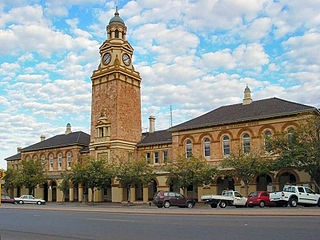
Kalgoorlie is a city in the Goldfields–Esperance region of Western Australia, located 595 km (370 mi) east-northeast of Perth at the end of the Great Eastern Highway. It is sometimes referred to as Kalgoorlie–Boulder, as the surrounding urban area includes the historic townsite of Boulder and the local government area is the City of Kalgoorlie–Boulder.
Goldfields West was an electoral district of the Legislative Assembly in the Australian state of New South Wales from 1859 to 1880, including the goldfields within a number of western electorates. Rolls were not kept for Gold Fields seats, voters being able to establish their right to vote by presenting either a mining licence or business licence in a proclaimed gold field that had been held for at least six months. Voters could also appear on the roll for general districts, but were prevented from voting in both their resident general district and the overlaying Gold Fields district.
The Western Argus was a newspaper published in Kalgoorlie, Western Australia, between 1894 and 1938.
Broad Arrow is a ghost town in Western Australia, located 38 km north of Kalgoorlie and 633 km east of Perth. It is on the Kalgoorlie to Leonora Road.
Sir Laurence "Brodie" Brodie-Hall was an influential figure in the mining industry of Western Australia (WA).
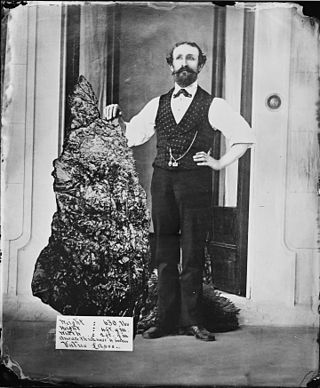
Bernhardt Otto Holtermann was a successful gold miner, businessman, politician and photographer in Australia. Perhaps his greatest claim to fame is his association with the Holtermann Nugget, the largest gold specimen ever found, 59 inches (1.5 m) long, weighing 630 pounds (290 kg) and with an estimated gold content of 3,000 troy ounces (93 kg), found at Hill End, near Bathurst, New South Wales. This gave him the wealth to build a mansion in North Sydney, which is now one of the boarding houses at Sydney Church of England Grammar School.
Mount Morgans, known as Mount Morgan until 1899, is an abandoned town in Western Australia 900 kilometres (559 mi) northeast of Perth and 40 kilometres (25 mi) southwest of Laverton on the original Malcolm-Laverton Road, in the Goldfields-Esperance region of Western Australia.

During the Australian gold rushes, starting in 1851, significant numbers of workers moved from elsewhere in Australia and overseas to where gold had been discovered. Gold had been found several times before, but the colonial government of New South Wales had suppressed the news out of the fear that it would reduce the workforce and so destabilise the economy.
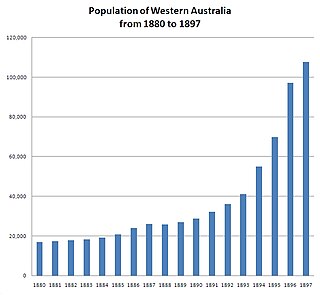
In the latter part of the nineteenth century, discoveries of gold at a number of locations in Western Australia caused large influxes of prospectors from overseas and interstate, and classic gold rushes. Significant finds included:
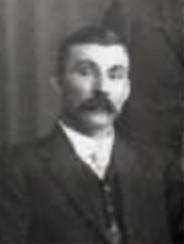
Thomas Henry Bath, CBE was an Australian politician, trade unionist, newspaper editor, writer, and cooperativist. A member of the Labor Party, he served as a Member of the Western Australian Legislative Assembly between 1902 and 1914 for the constituencies of Hannans, Brown Hill and Avon, and was also Minister for Education for a period of 79 days in 1905, and Leader of the Opposition between 1906 and 1910. In later life, Bath was involved in the establishment of the University of Western Australia, and also initiated several agricultural cooperatives.
New South Wales experienced the first gold rush in Australia, a period generally accepted to lie between 1851 and 1880. This period in the history of New South Wales resulted in a rapid growth in the population and significant boost to the economy of the colony of New South Wales. The California Gold Rush three years prior signaled the impacts on society that gold fever would produce, both positive and negative. The New South Wales colonial government concealed the early discoveries, but various factors changed the policy.

Charles Henry Roland was an Australian rules footballer who played with Carlton in the Victorian Football League (VFL).
The Coolgardie Miner was a weekly newspaper established in Coolgardie, Western Australia, at a time when Coolgardie was the prominent town in the goldfields region of Western Australia.
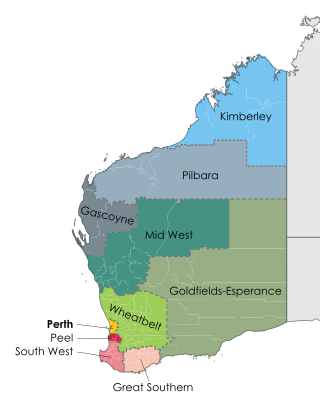
This is a list of newspapers published in, or for, the Goldfields-Esperance region of Western Australia.
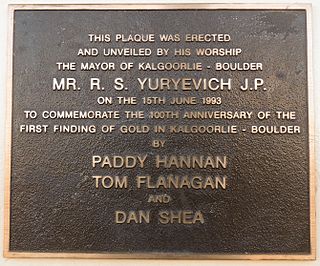
Thomas "Tom" Flanagan was a gold prospector who in 1893, together with fellow Irishmen Paddy Hannan and Dan Shea, found the first gold in what became the richest goldfield in Australia, in Kalgoorlie, Western Australia.

Hill End Historic Site is a heritage-listed former gold rush town and now township at Hill End, Bathurst Region, New South Wales, Australia. It was added to the New South Wales State Heritage Register on 2 April 1999.

The Greatest Wonder of the World and American Tobacco Warehouse and Fancy Goods Emporium are heritage-listed adjacent shops at 123-125 Mayne Street, Gulgong, Mid-Western Regional Council, New South Wales, Australia. They were built from 1870 to 1878. They have been refurbished to house the Gulgong Holtermann Museum, with new galleries constructed at the back to house the UNESCO listed HOLTERMANN COLLECTION. The original buildings were added to the New South Wales State Heritage Register on 21 October 2016.
The community of Kalgoorlie-Boulder in the Eastern Goldfields of Western Australia had an energetic newspaper publishing industry in the late 1890s and early 1900s.
Jabez Edward Dodd was an Australian politician. He was a member of the Western Australian Legislative Council from 1910 until his death, representing South Province. He was elected as a member of the Australian Labor Party, but left the party in the 1917 Labor split and represented the Nationalist Party thereafter.
Charles George Elliott was an Australian politician. He was a Nationalist Party member of the Western Australian Legislative Council from 1934 until his death, representing North-East Province.
References
- 1 2 3 4 5 6 "Mr Hugo Louis Beyers (1845-1910)". Former members of the Parliament of New South Wales . Retrieved 1 May 2019.
- ↑ "Family Notices". The Sydney Morning Herald . 2 April 1883. p. 1. Retrieved 14 April 2013– via Trove.
- 1 2 "PERSONAL". The Barrier Miner . Broken Hill, NSW. 24 June 1910. p. 4. Retrieved 14 April 2013– via Trove.
- 1 2 "Mining vicissitudes". Kalgoorlie Miner . WA. 10 June 1910. p. 8. Retrieved 15 April 2013– via Trove.
- ↑ "Mining vicissitudes". Kalgoorlie Miner . WA. 17 June 1910. p. 3. Retrieved 15 April 2013– via Trove.